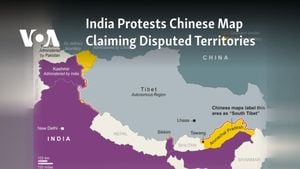During turbulent times, global economies have faced numerous challenges, yet signs of resilience and growth continue to emerge. Analysts and economists focus not only on recovery from the pandemic but also on several key indicators pointing to economic stability and future growth prospects. It's important to understand these trends, as they provide valuable insights for policymakers, businesses, and consumers alike.
One of the most noticeable indicators reflects consumer spending, which has shown remarkable strength across various sectors. Despite increased interest rates aimed at curbing inflation, many consumers remain confident enough to spend on essentials and luxuries alike. According to recent reports, overall consumer spending surged last month, indicating not just recovery, but growth, raising questions about the sustainability of this momentum.
The hospitality and travel industries are particularly noteworthy. After two years of lockdowns and restrictions, travelers returned with gusto, propelling sales to unexpected heights. Flight bookings have soared, and hotel occupancy rates reflect this renewed appetite. Businesses involved in travel and leisure appear to be adapting swiftly, responding to changing consumer preferences with enhanced offerings aimed at providing safer and more personalized experiences.
On another front, the employment market is another bright spot showcasing economic resilience. The job market has rebounded, with companies struggling to fill positions. According to experts, unemployment rates have dropped significantly, approaching pre-pandemic levels. This tightening labor market is pushing wages upward, which, economists argue, could sustain spending levels even if consumer confidence wavers.
Investment trends also paint an optimistic picture. Companies are ramping up capital expenditures on technology and infrastructure projects, betting on sustained growth. Data reveals businesses are heavily investing in innovation, seeking to optimize operations and meet the changing demands of consumers. This strategic focus on long-term growth reinforces the possibility for economic stability over extended periods.
While inflationary pressures remain, central banks are proceeding cautiously. The rate hikes implemented have shown some success—slowing the rapid inflation yet balancing the need not to choke off growth. According to analysts, the Federal Reserve, for example, continues to communicate its dual mandate clearly: tackling inflation and supporting economic growth. This delicate balancing act is drawing attention from economists worldwide, particularly as countries navigate the complex challenges of the global economic environment.
Another aspect worth delving deep is international trade flows, which are hinting at recovery. Recent data reveals increased freight shipping and trade volumes, bolstering the notion of global economic interconnectedness. Consumers across various countries are witnessing product availability rise as supply chains adjust, addressing previous disruptions triggered by the pandemic.
Adding to this narrative is the favorable effect of technological advancements. The rise of digital platforms has reshaped not just commerce but also consumer behavior. Businesses are leveraging technology to reach broader audiences efficiently, adapting to the ever-evolving marketplace. This transition has resulted not only in increased market access but also enhanced consumer experience.
Nevertheless, challenges persist. Geopolitical tensions, especially those leading to uncertainties surrounding commodity prices, continue to loom over the economic horizon. Supply chain disruptions linked to various global conflicts remind everyone of vulnerabilities inherent within interconnected economies.
Climate change remains another significant concern impacting global resilience. Tensions between economic growth and sustainable practices lead policymakers and businesses to be more creative as they navigate this pressing issue. Many companies are beginning to recognize the potential of integrating sustainability reporting with financial performance, seeking long-term benefits.
On the corporate front, firms are proactive, formulating strategies focused on sustainability. Investments made today to reduce carbon footprints may yield competitive advantages for companies moving forward. Corporate social responsibility isn't merely about ethics—it's becoming integrated within growth strategies as stakeholders increasingly demand it.
The global economic scenario suggests positive trends coexisting alongside noteworthy risks. Growth indicators are affirming resilience, but fluctuated factors like employment pressures, inflation, and the specter of trade tensions remind analysts of their work’s complexity.
Looking toward the future, industry leaders and policymakers will continue to play pivotal roles as they seek to navigate these challenges. Sustainable growth requires coordinated efforts across sectors and borders, marking the path toward resilience. The next phase calls for strategic action fueled by observant analysis, reminding everyone of the interconnected nature of today’s economy.
While the future may harbor uncertainties, insights derived from these indicators paint the potential for secure growth. With consumer confidence, proactive corporate strategies, and improved trade dynamics working together, the global economy stands at the cusp of promising, albeit cautious, growth.



